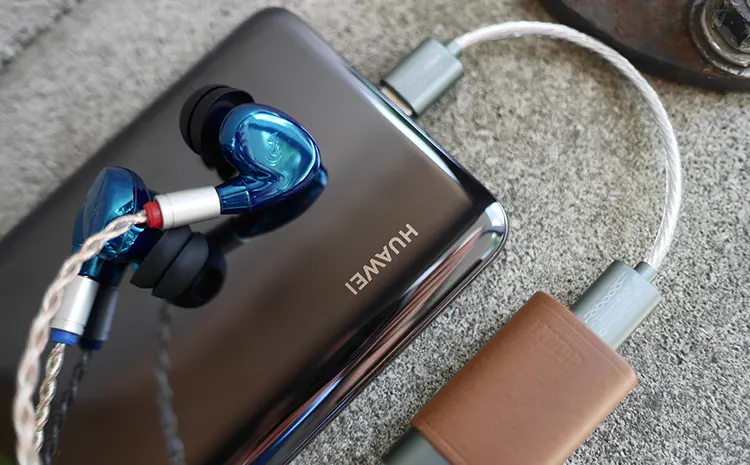Sound Impressions
Summary
The oBravo Clio has an energetic sound that does a good job of balancing a warm leaning signature with abundant detail and clarity in the midrange and treble regions.
While far from neutral, I would call it well-balanced since no one aspect of the presentation steps out significantly more than the rest.
The transient response of oBravo’s 6mm AMT driver is the most impressive aspect of the sound, as I have yet to find a track that pushes the limits of what it can do. Through the mids and treble, the Clio’s ability to delineate details and notes is truly impressive.
While the signature is quite pleasing to the ear, the lengthy initial break-in period of the AMT driver necessitates patience before the Clio sounds as smooth and refined as it can.
I also found there was a slight disconnect between the warmth of the dynamic driver and the cooler tones of the AMT driver, though it doesn’t take long to acclimatize to this.
Bass
Given the Clio was meant to be the more accurate, mature model of the lineup when compared to the Cupid and other relatives, the bass quantity came as a surprise.
It is elevated well beyond neutral with a good balance of mid- and sub-bass regions. The extension is excellent, giving the Clio plenty of visceral feedback when called upon by the track.
The mid-bass warmth ensures a natural quality to the low end, which also helps the vocal presentation. Texturing is a strong point, with the driver pulling a good amount of detail and clarity from tracks.
While the 9mm dynamic used is not the fastest I’ve heard and at times sounds hollow and slightly bloated, it responds quickly enough to avoid becoming smeared or congested on busy tracks.
Notes are also well controlled with convincing attack and smooth decay qualities that allow for smooth transitions.
Mids
The midrange is where the Clio starts to shine. They are balanced well with the surrounding frequencies, ensuring vocals and instruments that play in this region are not overshadowed.
While not the thickest presentation, notes are weighty enough to sound natural, helped along by the added warmth of the low end. Since the upper mids are not overly boosted, the Clio remains non-fatiguing.
Clarity and detail are where the Clio steps up. Even when many elements are playing at once, everything remains crisp, clear, and articulate, including background elements that might get lost through another earphone.
Texturing as such is also a strong point, with gruff vocals and crunchy instruments sounding appropriately rough and ripe with information. This also enables the Clio to pull off breathy, wispy vocals and effects with great success.
Sibilance management is also some of the best I’ve come across. While I typically avoid mentioning specific tracks or albums, Aesop Rock’s ‘Spirit World Field Guide’ is a great album for testing sibilance due to an unreasonably hot midrange mastering.
I find most earphones unlistenable with this album given how aggressive the sibilance can be. The Clio does an amazing job of taming this aggression, almost entirely negating the harshness present, while preserving the detail inherent in the mix.
Treble
The high end is where the AMT is truly at home, offering a solid balance of the presence and brilliance regions. It affords the Clio fantastic clarity and a welcome sparkle, but without being fatiguing or harsh.
The extension is quite good without any significant roll-off that would leave the sound feeling incomplete. Notes are presented with great definition, avoiding the vagueness that comes with splashiness.
Notes also attack and decay with impressive speed, allowing the Clio to easily navigate extremely congested tracks or soundscapes without blending individual elements. The speed can be off-putting on simpler tracks where you might want notes to linger more, but the trade-off is more than worth it.
While my initial impressions of the upper ranges were sub-par due to the graininess of the AMT, this resolved itself as the driver broke in. Should you find it sounding unrefined out of the box, just give it time, and hope that with future iterations of this driver oBravo breaks them in from the factory.
Staging & Dynamics
The sound stage of the Clio is wide and deep, outclassing much of what I’ve been listening to over the last few months. It is genuinely immersive and envelops the listener in the track.
The default vocal positioning sits just outside the ear, with the meaty bass floor giving the Clio an expansive stage to play on. This is one of those products that will fool you into thinking you heard something in the room with you when it was simply an element of whatever you’re listening to.
Imaging accuracy is high, with channel-to-channel transitions occurring smoothly and with great nuance. This goes for whether you’re experiencing movement just off-center, or out to the very edges of the stage.
It also layers quite well, with tracks giving off a convincing sense of depth that helps engage the listener. That also goes for instrument separation, which is also handled effectively and enables you to focus on specific elements and instruments without risk of interference.
Lastly, the transient response of the 6mm AMT driver is impressive and up there with the best I’ve heard. I find jazz-infused tracks, like ‘Starless and Bible Black’ from King Crimson, to be good tests of this quality given how chaotic and messy they can get.
A driver with poor transients completely flubs the final quarter of this song, smearing the nuanced details. Up to now, I found piezoelectric drivers to handle it best.
This AMT driver challenges that finding, and I’ve yet to find a track that it fumbles on. The reset time is unnaturally quick, making the Clio a technical powerhouse.
Synergy
Efficiency
The Clio has a sensitivity of 105 dB @1kHz and an impedance of 16Ω.
In my experience, the Clio is efficient with power but not at all picky about the source. Through my TEAC HA-501, I could run the Clio through the gamut of filter options, none of which seemed to alter the signature or cause background hiss.
I had the same experience with the Earstudio HUD100. While there is still an uncomfortable pop when plugging the Clio into the high output port, intended for hard-to-drive full-size headphones, the resulting sound is clean and hiss-free.
The rest of my dongles, from the lowly VE Odyssey HD to the more premium ddHiFi TC44C, provided a clean sound too. There was also very little signature variation from unit to unit, which is uncommon.
Lastly, since the Clio was showing itself to be efficient and versatile, I tried it with the ADV Accessport Air which is prone to background hiss regardless of what it’s driving. Some hissing was still present, but the amount the Clio mitigated was enough to leave iFi Audio’s iEMatch out of the loop.
Volume wasn’t an issue either unless listening in a dead-quiet area. In those rare instances, a few dB less of minimum volume was desired when running the Clio through the HUD100 or TC44C (balanced).
Pairings
I used the ddHiFi TC44C as my portable source, the EarMen TR-Amp as a mixed-use alternative, and the TEAC HA-501 as my sit-down source. The Clio was consistent regardless of what it was paired with.
Through the TC44C the Clio was detailed and punchy with good bass depth and solid extension into the upper regions. I didn’t run into issues with distortion at high volumes, or a perceived loss of emphasis in any frequencies.
The experience was the same using the 3.5mm single-ended port or 4.4mm balanced port. The only difference was the volume output, which was higher through the balanced port.
Swapping over to the TR-Amp, the upper volume limit was high which should please those who listen loud. Even at those volumes, I didn’t notice any distortion or smearing of detail with notes appearing distinct and as sharp as I would expect given the qualities of the AMT driver.
The only negative appeared at volumes well beyond what is safe. In this forced instance, the dynamic driver increased in volume at a faster rate than the AMT, resulting in a distracting low-end increase.
On the TEAC HA-501, the output was cleaner than the two mobile options giving the Clio even more of a premium, high-fidelity sound. The warmth the TEAC often adds to earphones was absent, and the damping system had no noticeable effect on the signature.
Unlike on the TR-Amp, the Clio’s drivers increased in volume with equal prominence. This gave me a consistent experience, even in those rare moments when a huge bump in volume was attempted.
The Clio syncs well with any source, but if you want the best experience be sure to give it a powerful, clean amp. The difference won’t be drastic from device to device, but there is a difference, however slight.



